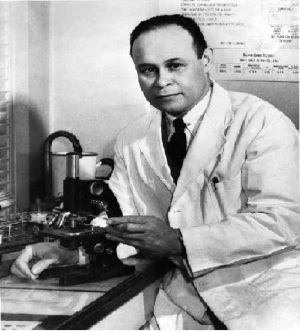From the April 2015 issue of HealthCare Business News magazine
Given how ubiquitous blood donation drives are today, it’s hard to believe that blood banks have only been around since the 1940s. That’s when Dr. Charles Richard Drew discovered that blood plasma could be preserved for much longer periods, creating a need for the specialized storage. Drew was born on June 3, 1904 in Washington D.C. He graduated from Amherst College and then briefly worked at Morgan State College in Baltimore to save up enough money to attend medical school.
At the time, few doors were open to African-Americans looking to pursue a medical degree. Drew saw Howard University as his only viable option, but the school rejected him because he didn’t have enough
English credits. Drew then looked to America’s neighbor to the north, and was accepted to Canada’s McGill University. He graduated second in his class of 127 students, and briefly practiced in Montreal while also studying the issues around blood transfusions.
When Drew’s father passed away in 1934, he decided to return to the U.S. to be closer to his family. This time, Howard University welcomed him with open arms, and he joined the faculty. He was then nominated to participate in the Rockefeller Foundation Research Fellowship, which brought him to Columbia University.
While doing lab work during his fellowship, Drew discovered that plasma (the liquid part of blood) lasts much longer by itself than when it is a part of blood as a whole. He found that separating the plasma and then dehydrating it greatly extends the life of the plasma. When needed later on, the plasma could be rehydrated and used in blood transfusions.
Drew also discovered that while it is critical to match an individual’s blood type with that of the donor for a successful transfusion, it’s not the case with plasma. Everyone has the same type of plasma, which means that it can be transfused with ease. Drew presented his pioneering research in his thesis, “Banked Blood: A Study in Blood Preservation.”
In 1939, Drew married Lenore Robbins, but he didn’t have much time to bask in the newlywed period. When World War II broke out, he received an alarming telegram from a former professor, asking him to “secure 5,000 ampules of dried plasma for transfusion.” Drew rose to the occasion by organizing an American “Blood for Britain” campaign.
He coordinated the massive undertaking of collecting and shipping the plasma overseas to treat the wounded. To help collect the blood, Drew established “bloodmobiles”, trucks with refrigerators that could store and transport the donations. The concept is still used for blood collection today. According to some reports, Drew was able to collect as much as 14,500 pints of plasma for the effort.
His success propelled him to serve as the head of the American Red Cross Blood Bank in New York. He was charged with organizing a massive blood drive for the U.S. armed forces. However, Drew didn’t stay there long. When the U.S. War Department issued an order to separate the blood supply based on the donor’s race, he protested and resigned.
It was not the only time that Drew stood up to racial injustice. He also refused membership in the American College of Surgeons because it failed to offer admission to well-qualified black surgeons.
On April 1, 1950, Drew was driving to a meeting in Alabama when he dozed off at the wheel. The car overturned and flipped several times, causing a fatal accident. For years, it was rumored that Drew died because the nearby, predominately white hospital refused to administer a blood transfusion to a black patient. However, the extensive injuries Drew sustained were the actual cause of his death. Unfortunately, his pioneering work on blood plasma, which continues to save so many lives today, could not have saved his.
